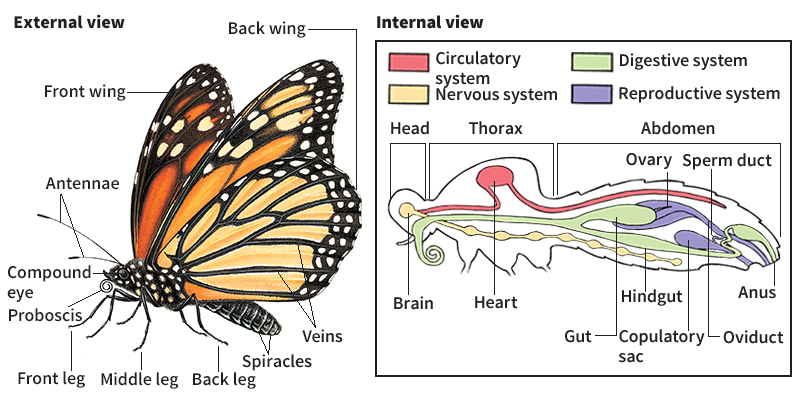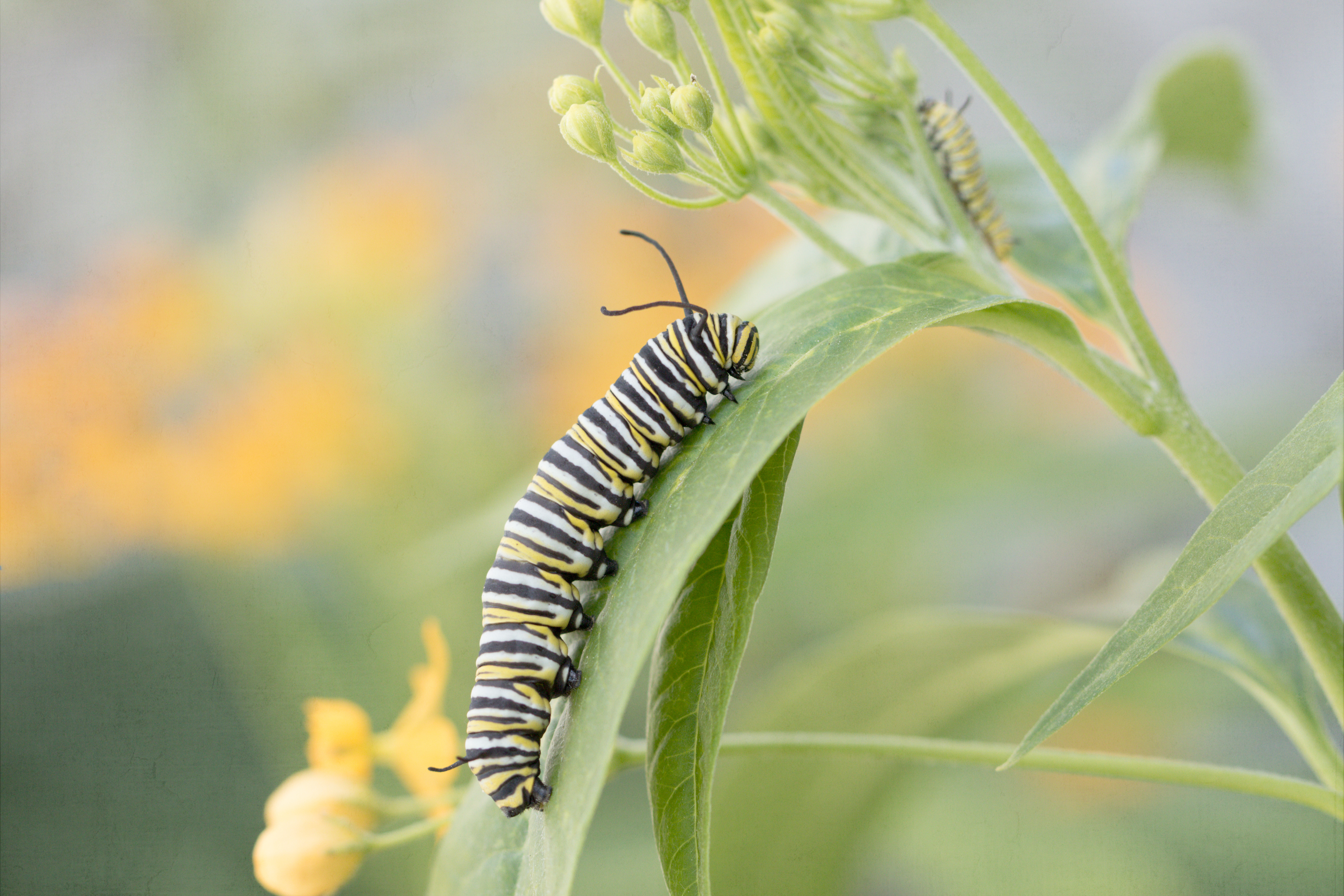Monarch butterfly is a butterfly known for its distinctive orange and black wings. Monarchs are also known for their migration patterns. Each fall, huge swarms of monarch butterflies fly thousands of miles or kilometers south to escape the winter cold that their body cannot tolerate.

The monarch butterfly’s wings are orange with black lines. White dots border the wings. The bright orange color helps warn predators that the monarch is poisonous. The poison comes from the monarch’s primary source of food, a plant called milkweed. Male monarchs have one black dot on either side of their lower wings. These spots are scent glands. They help males attract females. The monarch’s body is black with white markings. The monarch’s wingspread is 3 1/2 to 4 inches (8.9 to 10.2 centimeters). Monarchs weigh less than 1 ounce (30 grams).
The monarch butterfly is native to North and South America. Monarchs are also found in such countries as Spain, New Zealand, and Australia. In the Americas, monarchs are divided into two groups: western monarchs and eastern monarchs. Western monarchs breed west of the Rocky Mountains in the United States. They travel to southern California in winter. Eastern monarchs breed in Canada and the Great Plains in the United States. They travel to central Mexico in winter.
The female monarch butterfly lays from 300 to 500 eggs on the leaf of a milkweed plant. The female produces a gluelike substance, securing the eggs to the leaf. After a few days, the eggs hatch into larvae (young), also called caterpillars. The caterpillars spend most of their time eating milkweed. After about two weeks of eating, a caterpillar encases itself to form a chrysalis. A week or two later, the insect emerges as an adult butterfly. The average lifespan of a monarch butterfly is six to eight months. 
Each year, huge swarms of monarchs travel south to such places as California or Mexico. The monarch can travel more than 2,000 miles (3,200 kilometers). The insect has efficient muscles that enable it to travel such long distances. They may also ride air currents. Monarchs follow the sun. They also use an internal compass to navigate, when the sun is not visible. Monarchs travel south to escape harsh weather conditions. Once the monarchs reach either California or Mexico, they lie dormant in forest trees.
There are several threats to the survival of monarch butterflies. Climate change can disrupt the butterfly’s cycles of reproduction and migration. Also, the removal of milkweed has limited the monarch’s food supply.
